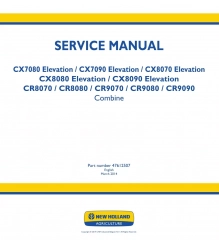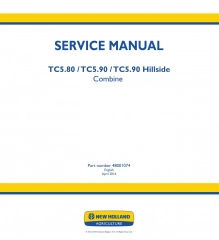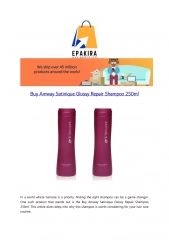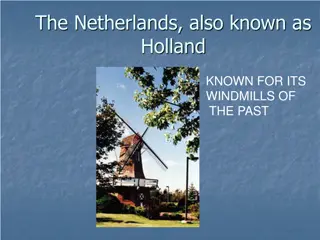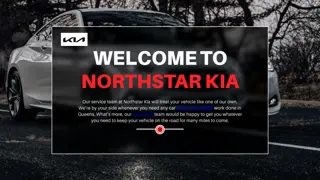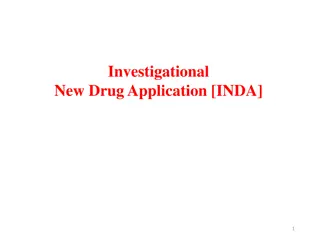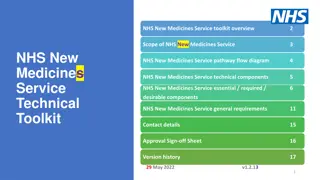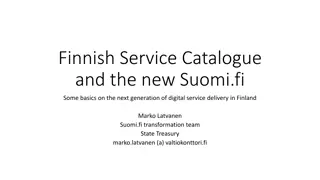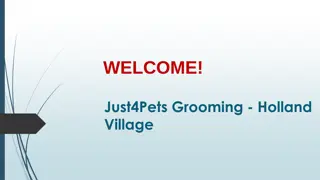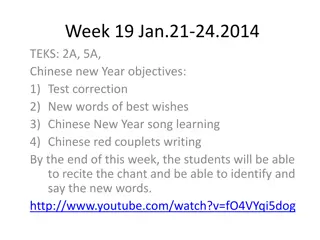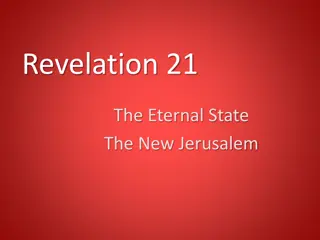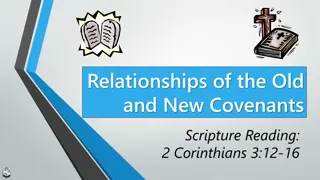
New Holland B115 Backhoe Loader Service Repair Manual Instant Download
New Holland B115 Backhoe Loader Service Repair Manual Instant Download
Download Presentation

Please find below an Image/Link to download the presentation.
The content on the website is provided AS IS for your information and personal use only. It may not be sold, licensed, or shared on other websites without obtaining consent from the author. If you encounter any issues during the download, it is possible that the publisher has removed the file from their server.
You are allowed to download the files provided on this website for personal or commercial use, subject to the condition that they are used lawfully. All files are the property of their respective owners.
The content on the website is provided AS IS for your information and personal use only. It may not be sold, licensed, or shared on other websites without obtaining consent from the author.
E N D
Presentation Transcript
1 TO READER This manual has been printed for a skilful engineer to supply necessary technical information to carry out service operations on this machine. CNH ITALIA S.p.A. Technical Information Viale delle Nazioni, 55 41100 MODENA - Italy Read carefully this manual to collect correct infor- mation relevant to repair procedures. For any question or remark, or in case of any error relevant the contents of this manual, please con- tact: REFERENCES Beyond this Service Manual, also refer to documents hereunder listed: Operator s Manual Parts Catalogue COMPLETE HANDBOOK FOR INSTRUCTIONS AND REPAIRS The complete Service Manual consists of two volumes: The Service Manuals for Loader backhoe and Engine contain the necessary technical informa- tion to carry out service and repair on machine and on engine, necessary tools to carry out those op- erations and information on service standard, on procedures for connection, disconnection, disas- sembly and assembly of parts. B110 - B115 Service Manual LOADER BACKHOE B110 - B115 Service Manual Engine The complete Service Manual which covers the loader backhoe models B110 - B115 consists of the following volumes, which can be identified through their print number as stated below: VOLUME MACHINE TYPE PRINT NUMBER Service Manual - Loader backhoe B110 - B115 87643846 Service Manual - Engine B110 - B115 87643867
3 LOADER BACKHOE MODELS The complete range of Loader Backhoe models described in this manual are identified below: B110 B115 Powershift Powershuttle / Stabilizer sideshift Stabilizer centre pivot / Cab 4WD 4WS / Pilot control Mechanical control Engine Iveco 82 kW - 110 HP model F4HE9484C*J102 / Engine Iveco 82 kW - 110 HP model F4HE9484C*J103 / Long dipper
1 INDEX SECTION 00 - SAFETY PRECAUTIONS SECTION 01 - MAINTENANCE SECTION 02 - TECHNICAL SPECIFICATIONS 1. MODELS....................................................................................................................................................... 3 2. IDENTIFICATION OF MAIN COMPONENTS............................................................................................... 4 3. TECHNICAL SPECIFICATIONS................................................................................................................... 5 4. LOADER ATTACHMENT DIMENSIONS AND PERFORMANCE ................................................................ 8 5. BACKHOE ATTACHMENT DIMENSIONS AND PERFORMANCE ........................................................... 12 6. LIFTING CAPACITIES................................................................................................................................ 15 7. LOADER BUCKET WITH FORKS DIMENSIONS AND PERFORMANCE................................................. 18 8. FLUID AND LUBRICANT CAPACITIES AND SPECIFICATIONS.............................................................. 19 SECTION 17 - TORQUE CONVERTERS 1. POWERSHUTTLE TORQUE CONVERTER................................................................................................ 3 1.1 DESCRIPTION AND OPERATION........................................................................................................ 3 1.2 TECHNICAL SPECIFICATIONS............................................................................................................ 4 1.3 OVERHAUL........................................................................................................................................... 4 1.4 INSPECTION......................................................................................................................................... 4 1.5 DISASSEMBLY AND ASSEMBLY......................................................................................................... 5 1.6 STALL TEST.......................................................................................................................................... 5 1.7 FAULT FINDING.................................................................................................................................... 6 2. POWERSHIFT TORQUE CONVERTER...................................................................................................... 7 2.1 DESCRIPTION AND OPERATION........................................................................................................ 7 2.2 TECHNICAL SPECIFICATIONS............................................................................................................ 8 2.3 OVERHAUL........................................................................................................................................... 8 2.4 INSPECTION......................................................................................................................................... 9 2.5 DISASSEMBLY AND ASSEMBLY......................................................................................................... 9 2.6 STALL TEST........................................................................................................................................ 11 2.7 FAULT FINDING.................................................................................................................................. 12 SECTION 21 - TRANSMISSION 1. POWERSHUTTLE TRANSMISSION TURNER MODEL COM-T4-2025 ................................................... 3 1.1 TECHNICAL SPECIFICATIONS............................................................................................................ 3 1.2 TIGHTENING TORQUES...................................................................................................................... 5 1.3 TRANSMISSION CONTROLS............................................................................................................... 6 1.4 LUBRICATION..................................................................................................................................... 11 1.5 TRANSMISSION OIL FLOW AND SUPPLY........................................................................................ 12 1.6 TRANSMISSION HYDRAULIC VALVES AND PRESSURE TEST POINTS....................................... 18 1.7 TRANSMISSION POWER FLOW........................................................................................................ 19 1.8 TRANSMISSION 4WD COMPONENTS.............................................................................................. 23 1.9 TRANSMISSION REMOVAL............................................................................................................... 28 1.10 DISASSEMBLY AND ASSEMBLY..................................................................................................... 29 1.11 FAULT FINDING................................................................................................................................ 87 1.12 SPECIAL TOOLS............................................................................................................................... 90
https://www.ebooklibonline.com Hello dear friend! Thank you very much for reading. Enter the link into your browser. The full manual is available for immediate download. https://www.ebooklibonline.com
2 2. POWERSHIFT TRANSMISSION DANA T16000 ..................................................................................... 91 2.1 TECHNICAL SPECIFICATIONS.......................................................................................................... 91 2.2 TRANSMISSION CONTROLS............................................................................................................. 92 2.3 LUBRICATION................................................................................................................................... 102 2.4 PRESSURE SPECIFICATIONS AND CHECK POINTS.................................................................... 103 2.5 TRANSMISSION COOLER................................................................................................................ 105 2.6 TRANSMISSION HYDRAULIC DIAGRAM........................................................................................ 106 2.7 OPERATION...................................................................................................................................... 107 2.8 POWER FLOWS................................................................................................................................ 114 2.9 GEAR AND CLUTCH LAY OUT ........................................................................................................ 129 2.10 TRANSMISSION REMOVAL AND INSTALLATION........................................................................ 130 2.11 TRANSMISSION COMPONENTS...................................................................................................134 2.12 DISASSEMBLY AND ASSEMBLY................................................................................................... 152 2.13 SPECIAL TOOLS............................................................................................................................. 261 2.14 FAULT FINDING..............................................................................................................................262 2.15 FAULT FINDING..............................................................................................................................264 SECTION 25 - FRONT AXLES 1. FRONT AXLE 4WD CARRARO ................................................................................................................. 3 1.1 TECHNICAL SPECIFICATIONS............................................................................................................ 3 1.2 DISASSEMBLY AND ASSEMBLY......................................................................................................... 9 1.3 FAULT FINDING.................................................................................................................................. 55 2. FRONT AXLE 4WS CARRARO ............................................................................................................... 58 2.1 TECHNICAL SPECIFICATIONS.......................................................................................................... 58 2.2 DISASSEMBLY AND ASSEMBLY....................................................................................................... 62 2.3 FAULT FINDING................................................................................................................................ 115 3. SPECIAL TOOLS...................................................................................................................................... 118 SECTION 27 - REAR AXLE 1. REAR AXLE 2WS......................................................................................................................................... 3 1.1 DESCRIPTION AND OPERATION....................................................................................................... 3 1.2 TECHNICAL SPECIFICATIONS............................................................................................................ 6 1.3 DISASSEMBLY AND ASSEMBLY......................................................................................................... 8 1.4 FAULT FINDING.................................................................................................................................. 27 2. REAR AXLE 4WS CARRARO .................................................................................................................. 28 2.1 TECHNICAL SPECIFICATIONS.......................................................................................................... 28 2.2 DISASSEMBLY AND ASSEMBLY....................................................................................................... 32 2.3 FAULT FINDING.................................................................................................................................. 81 3. SPECIAL TOOLS........................................................................................................................................ 84 SECTION 33 - BRAKES SYSTEM 1. TECHNICAL SPECIFICATIONS................................................................................................................... 3 2. HAND BRAKE............................................................................................................................................... 6 2.1 HAND BRAKE ADJUSTMENT............................................................................................................... 7 3. BRAKE CYLINDERS .................................................................................................................................... 8 4. OIL BRAKE TANK....................................................................................................................................... 13 5. BLEEDING PROCEDURE.......................................................................................................................... 13
3 SECTION 35 - HYDRAULIC SYSTEM 1. HYDRAULIC DIAGRAMS............................................................................................................................. 3 1.1 HYDRAULIC DIAGRAM - 2WS SIDESHIFT MECHANICAL MODELS................................................. 3 1.2 HYDRAULIC DIAGRAM - 2WS SIDESHIFT PILOT MODELS.............................................................. 5 1.3 HYDRAULIC DIAGRAM - 2WS CENTRE PIVOT PILOT MODELS ...................................................... 7 1.4 HYDRAULIC DIAGRAM - 4WS SIDESHIFT MECHANICAL MODELS................................................. 9 1.5 HYDRAULIC DIAGRAM - 4WS SIDESHIFT PILOT MODELS............................................................ 11 1.6 HYDRAULIC DIAGRAM - 4WS CENTRE PIVOT PILOT MODELS.................................................... 13 2. HYDRAULIC PUMP.................................................................................................................................... 15 2.1 DESCRIPTION AND OPERATION...................................................................................................... 15 2.2 TECHNICAL SPECIFICATIONS.......................................................................................................... 15 2.3 LOAD SENSING VALVE ..................................................................................................................... 17 2.4 REMOVAL ........................................................................................................................................... 19 2.5 COMPONENTS................................................................................................................................... 20 2.6 DISASSEMBLY AND ASSEMBLY....................................................................................................... 21 3. CONTROL VALVES ................................................................................................................................... 25 3.1 CONTROL VALVES REXROTH (MECHANICAL MODELS)............................................................ 25 3.2 CONTROL VALVES REXROTH (PILOT MODELS) ......................................................................... 41 3.3 SOLENOID VALVE FOR PILOTING THE BACKHOE CONTROL VALVE (WITH HYDRAULIC CONTROL)......................................................................................................... 50 3.4 RELIEF VALVES ................................................................................................................................. 53 3.5 ACCUMULATOR GLIDE RIDE PARKER .......................................................................................... 61 4. HYDRAULIC SWING SYSTEM .................................................................................................................. 64 4.1 DESCRIPTION AND OPERATION...................................................................................................... 64 4.2 HYDRAULIC OIL FLOW...................................................................................................................... 65 5. HYDRAULIC CYLINDERS.......................................................................................................................... 67 5.1 LOADER CYLINDER........................................................................................................................... 68 5.2 LOADER BUCKET CYLINDER ........................................................................................................... 74 5.3 4X1 BUCKET CYLINDER.................................................................................................................... 80 5.4 BACKHOE BOOM CYLINDER ............................................................................................................ 83 5.5 BACKHOE DIPPER CYLINDER.......................................................................................................... 87 5.6 BACKHOE BUCKET CYLINDER......................................................................................................... 91 5.7 SHORT AND LONG TELESCOPIC CYLINDER.................................................................................. 95 5.8 STABILIZER CYLINDER (CENTRE PIVOT MODELS)....................................................................... 99 5.9 STABILIZER CYLINDER (SIDESHIFT MODELS)............................................................................. 103 5.10 SWING CYLINDER.......................................................................................................................... 107 5.11 BACKHOE SIDESHIFT LOCKING CYLINDER (SIDESHIFT)......................................................... 111 5.12 SPECIAL TOOLS............................................................................................................................. 113 6. HYDRAULIC CONTROL LEVERS ........................................................................................................... 114 6.1 TECHNICAL SPECIFICATIONS........................................................................................................ 114 6.2 DESCRIPTION AND OPERATION.................................................................................................... 115 6.3 DISASSEMBLY AND ASSEMBLY..................................................................................................... 118 6.4 CONTROL LEVER VALVE................................................................................................................ 121 7. FAULT FINDING AND FLOW TESTING .................................................................................................. 124 7.1 PRELIMINARY CHECKS................................................................................................................... 124 7.2 FAULT FINDING (WITH REXROTH CONTROL VALVES)............................................................. 125
4 SECTION 39 - CHASSIS 1. DESCRIPTION AND OPERATION............................................................................................................... 3 2. REMOVAL AND INSTALLATION COMPONENTS....................................................................................... 6 2.1 COMPONENTS WITHIN THE CHASSIS............................................................................................... 6 2.2 COMPONENTS BELOW THE CHASSIS .............................................................................................. 7 2.3 COMPONENTS ATTACHED OUTSIDE THE CHASSIS....................................................................... 9 2.4 COMPONENTS ATTACHED ABOVE THE CHASSIS......................................................................... 10 2.5 TIGHTENING TORQUES.................................................................................................................... 12 SECTION 41 - STEERING SYSTEM 1. STEERING SYSTEM 2WS ........................................................................................................................... 4 2. STEERING SYSTEM 4WS ........................................................................................................................... 7 3. POWER STEERING................................................................................................................................... 12 3.1 TECHNICAL SPECIFICATIONS.......................................................................................................... 13 3.2 COMPONENTS ................................................................................................................................... 15 3.3 DISASSEMBLY AND ASSEMBLY....................................................................................................... 16 3.4 SPECIAL TOOLS................................................................................................................................. 33 3.5 FAULT FINDING.................................................................................................................................. 33 SECTION 50 - CAB HEATING AND AIR CONDITIONING 1. TECHNICAL SPECIFICATIONS................................................................................................................... 3 2. CAB HEATING.............................................................................................................................................. 5 2.1 DESCRIPTION AND OPERATION........................................................................................................ 5 3. AIR CONDITIONING................................................................................................................................... 12 3.1 PRINCIPALS OF AIR CONDITIONING............................................................................................... 12 3.2 SAFETY PRECAUTIONS.................................................................................................................... 16 3.3 DESCRIPTION AND OPERATION...................................................................................................... 17 3.4 FAULT FINDING AND TESTING......................................................................................................... 25 3.5 FLUSHING THE SYSTEM................................................................................................................... 43 3.6 EVACUATING THE SYSTEM.............................................................................................................. 45 3.7 CHARGING THE SYSTEM.................................................................................................................. 46 3.8 COMPONENTS OVERHAUL............................................................................................................... 47 3.9 COMPRESSOR................................................................................................................................... 52 3.10 SPECIAL TOOLS............................................................................................................................... 66 SECTION 55 - ELECTRICAL SYSTEM 1. GENERALITIES............................................................................................................................................ 3 1.1 TEMPORARY WIRING HARNESS REPAIR......................................................................................... 3 1.2 FAULT FINDING.................................................................................................................................... 4 2. ELECTRICAL DIAGRAMS............................................................................................................................ 5 2.1 ELECTRICAL DIAGRAMS - POWERSHUTTLE CAB ........................................................................... 5 2.2 ELECTRICAL DIAGRAMS - POWERSHIFT CAB............................................................................... 22 2.3 ELECTRICAL DIAGRAMS - 4WS........................................................................................................ 39 3. CONTROLS AND INSTRUMENTS............................................................................................................. 57 3.1 FRONT INSTRUMENT PANEL ........................................................................................................... 57 3.2 CALIBRATION OF SPEEDOMETER................................................................................................... 59 3.3 SIDE INSTRUMENT PANEL ............................................................................................................... 60 3.4 IMMOBILISER CIRCUIT...................................................................................................................... 64
5 4. DIAGNOSTICS DISPLAY........................................................................................................................... 65 4.1 SYMBOL.............................................................................................................................................. 66 4.2 SETUP MENU ..................................................................................................................................... 67 4.3 SETUP MENU ..................................................................................................................................... 68 4.4 PROCEDURE ABOUT SELF TEST .................................................................................................... 69 4.5 ON BOARD ERROR CODE RETRIEVAL ........................................................................................... 70 4.6 BACKLIGHTING AND DIMMING......................................................................................................... 71 4.7 WORK HOURS.................................................................................................................................... 72 4.8 FUNCTIONAL DESCRIPTION ............................................................................................................ 73 4.9 MAINTENANCE................................................................................................................................... 79 4.10 WARNING MESSAGES .................................................................................................................... 80 5. STARTING SYSTEM.................................................................................................................................. 86 5.1 DESCRIPTION AND OPERATION...................................................................................................... 86 5.2 FAULT FINDING.................................................................................................................................. 87 5.3 STARTER MOTOR.............................................................................................................................. 90 6. ALTERNATOR............................................................................................................................................ 96 6.1 TECHNICAL SPECIFICATIONS.......................................................................................................... 96 6.2 DESCRIPTION AND OPERATION...................................................................................................... 96 6.3 COMPONENTS................................................................................................................................... 98 6.4 REMOVAL ........................................................................................................................................... 99 6.5 PRELIMINARY CHECK AND TESTS................................................................................................ 100 6.6 FAULT FINDING................................................................................................................................ 109 7. BATTERY ................................................................................................................................................. 110 7.1 TECHNICAL SPECIFICATIONS........................................................................................................ 110 7.2 DESCRIPTION AND OPERATION.................................................................................................... 110 7.3 BATTERY REPLACEMENT .............................................................................................................. 111 7.4 MAINTENANCE................................................................................................................................. 113 7.5 TESTS ............................................................................................................................................... 115 7.6 CONNECTING A BOOSTER BATTERY........................................................................................... 117 7.7 BATTERY MASTER SWITCH........................................................................................................... 117 8. COMPONENT TESTING.......................................................................................................................... 118 8.1 GENERAL INTRODUCTION ............................................................................................................. 118 8.2 COMPONENT TESTING................................................................................................................... 119 8.3 GROUND POINTS............................................................................................................................. 119 8.4 KEY-START AND STOP SWITCH.................................................................................................... 121 8.5 ALTERNATOR................................................................................................................................... 122 8.6 TRANSMISSIONS............................................................................................................................. 122 8.7 PARKING BRAKE SWITCH .............................................................................................................. 126 8.8 CAB ................................................................................................................................................... 127 8.9 4WD SWITCH.................................................................................................................................... 132 8.10 BRAKE PEDAL SWITCHES............................................................................................................ 132 8.11 BRAKE OIL LEVEL SWITCH........................................................................................................... 133 8.12 FRONT WORK LAMP SWITCH (1) - REAR WORK LAMP SWITCH (2) MAIN LIGHT SWITCH ... 133 8.13 HAZARD SWITCH........................................................................................................................... 134 8.14 FLASHER MODULE........................................................................................................................ 134 8.15 MULTI FUNCTION SWITCH ........................................................................................................... 135 8.16 FRONT WIPER MOTOR (1) - REAR WIPER MOTOR - (2)............................................................ 135 8.17 4WS -STEERING SELECTOR SWITCH......................................................................................... 136 8.18 STEERING CONTROL UNIT........................................................................................................... 137 8.19 4WS REAR AXLE STEERING SENSOR ........................................................................................ 139 8.20 4WS FRONT AXLE STEERING SENSOR...................................................................................... 139 8.21 STEERING SOLENOIDS................................................................................................................. 140
6 8.22 DIFFERENTIAL LOCK SWITCH (1)................................................................................................ 141 8.23 LOADER .......................................................................................................................................... 142 8.24 BACKHOE........................................................................................................................................ 144 8.25 REVERSING BUZZER..................................................................................................................... 149 8.26 FUEL LEVEL SENDER.................................................................................................................... 149 SECTION 82 - LOADER 1. LOADER ATTACHMENT CONTROLS......................................................................................................... 4 2. LOADER BUCKET SELF LEVELING........................................................................................................... 7 3. LOADER ATTACHMENT SAFETY STRUT................................................................................................ 10 4. LOADER BUCKET REMOVAL ................................................................................................................... 12 5. LOADER REMOVAL (2WS)........................................................................................................................ 15 6. LOADER REMOVAL (4WS)........................................................................................................................ 17 SECTION 84 - BACKHOE 1. DESCRIPTION AND OPERATION............................................................................................................... 3 2. BACKHOE ATTACHMENT MECHANICAL CONTROL VERSION............................................................... 6 3. BACKHOE ATTACHMENT HYDRAULIC CONTROLS VERSION............................................................. 14 4. REMOVAL AND INSTALLATION ............................................................................................................... 16 5. TELESCOPIC DIPPER REVISION............................................................................................................. 26
7 SECTIONS INDEX Where disassembly of a specific component is required refer to the relevant repair manual section. SECTION 17: TORQUE CONVERTERS SECTION 21: TRANSMISSION SECTION 25: FRONT AXLE SECTION 27: REAR AXLE SECTION 33: BRAKES SYSTEM SECTION 35: HYDRAULIC SYSTEM SECTION 39: CHASSIS SECTION 41: STEERING SYSTEM SECTION 50: CAB HEATING AND AIR CONDITIONING SECTION 55: ELECTRICAL SYSTEM SECTION 82: LOADER SECTION 84: BACKHOE
B110 B115 SECTION 00 - SAFETY PRECAUTIONS
SECTION 00 - SAFETY PRECAUTIONS 3 This warning symbol points out important messages involving personal safety. Carefully read the safety rules contained herein and follow advised precautions to avoid potential haz- ards and safeguard your safety and personal integ- rity. In this manual you will find this symbol together with the following key-words: WARNING - it gives warning about improper repair operations and deriving potential consequences af- fecting the service technician s personal safety. DANGER - it gives specific warning about potential dangers for personal safety of the operator or other persons directly or indirectly involved. TO PREVENT ACCIDENTS Most accidents and personal injuries that occur in industry, on the farm, at home or on the road, are caused by the failure of some individual to follow simple and fundamental safety rules or precautions. For this reason, MOST ACCIDENTS CAN BE PREVENTED by recognizing the real cause and taking the nec- essary precautions, before the accident occurs. Regardless of the care used in design and construction of any type of equipment, there may be conditions that cannot be completely safeguarded against, without interfering with reasonable accessibility and efficient oper- ation. A careful operator or technician is the best precaution against accidents. The complete observance of one sim- ple rule would prevent many thousands of serious injuries each year. This rule is: Never attempt to clean, lubricate or adjust a machine while it is in motion.
4 SECTION 00 - SAFETY PRECAUTIONS SAFETY RULES Carefully follow specified repair and maintenance procedures. Do not wear rings, wristwatches, jewels, unbut- toned or flapping clothing such as ties, torn clothes, scarves, open jackets or shirts with open zips which could get hold into moving parts. We advise to use approved safety clothing such as anti-slipping footwear, gloves, safety goggles, hel- mets, etc. Never carry out any repair on the machine if some- one is sitting on the operator s seat, except if they are certified operators to assist in the operation to be carried out. Never operate the machine or use attachments from a place other than sitting at the operator s seat. Never carry out any operation on the machine when the engine is running, except when specifi- cally indicated. Stop the engine and ensure that all pressure is re- lieved from hydraulic circuits before removing caps, covers, valves, etc. All repair and maintenance operations should be carried out with the greatest care and attention. Service stairs and platforms used in a workshop or in the field should be built in compliance with the safety rules in force. Disconnect the batteries and label all controls to warn that the Machine is being serviced. Block the machine and all equipment which should be raised. Never check or fill fuel tanks and accumulator bat- teries, nor use starting liquid if you are smoking or near open flames as such fluids are flammable. Brakes are inoperative when they are manually re- leased for maintenance purposes. In such cases, the machine should be kept constantly under con- trol using blocks or similar devices. The fuel filling gun should remain always in contact with the filler neck. Maintain this contact until the fuel stops flowing into the tank to avoid possible sparks due to static electricity buildup. Use exclusively specified towing points for towing the machine. Connect parts carefully. Ensure that foreseen pins and/or locks are steadily fixed before applying traction. Do not stop near towing bars, cables or chains working under load. To transfer a failed machine, use a trailer or a low loading platform trolley if available. To load and unload the machine from the transpor- tation mean, select a flat area providing a firm sup- port to the trailer or truck wheels. Firmly tie the machine to the truck or trailer platform and block wheels as required by the forwarder. For electrical heaters, battery-chargers and similar equipment use exclusive auxiliary power supplies with a efficient ground to avoid electrical shock hazard. Always use lifting equipment and similar of appro- priate capacity to lift or move heavy components. Pay special attention to bystanders. Never pour gasoline or diesel oil into open, wide and low containers. Never use gasoline, diesel oil or other flammable liquids as cleaning agents. Use non-flammable non-toxic proprietary solvents. Wear protection goggles with side guards when cleaning parts using compressed air. Do not exceed a pressure of 2.1 bar (30 psi), in ac- cordance with local regulations. Do not run the engine in a closed building without proper ventilation. Do not smoke, use open flames, cause sparks in the nearby area when filling fuel or handling highly flammable liquids. Do not use flames as light sources when working on a machine or checking for leaks. Move with caution when working under a Machine, and also on or near a Machine. Wear proper safety accessories: helmets, goggles and special footwear. During checks which should be carried out with the engine running, ask an assistant to sit at the oper- ator s seat and keep the service technician under visual control at any moment. In case of operations outside the workshop, drive the machine to a flat area and block it. If working on an incline cannot be avoided, first block the Ma- chine carefully. Move it to a flat area as soon as possible with a certain extent of safety. Ruined or plied cables and chains are unreliable. Do not use them for lifting or trailing. Always han- dle them wearing gloves of proper thickness. Chains should always be safely fastened. Ensure that fastening device is strong enough to hold the load foreseen. No persons should stop near the fastening point, trailing chains or cables. The working area should be always kept CLEAN and DRY. Immediately clean any spillage of water or oil. Do not pile up grease or oil soaked rags, as they constitute a great fire hazard. Always place them into a metal container. Before starting the Machine or its attachments, check, adjust and block the op- erator s seat. Also ensure that there are no per- sons within the Machine or attachment operating range. Do not keep in your pockets any object which might fall unobserved into the Machine s inner compartments.
SECTION 00 - SAFETY PRECAUTIONS 5 Whenever there is the possibility of being reached by ejected metal parts or similar, use protection eye mask or goggles with side guards, helmets, special footwear and heavy gloves. Wear suitable protection such as tinted eye protection, helmets, special clothing, gloves and footwear whenever it is necessary to carry out welding procedures. All persons standing in the vicinity of the welding proc- ess should wear tinted eye protection. NEVER LOOK AT THE WELDING ARC IF YOUR EYES ARE NOT SUITABLY PROTECTED. Metal cables with the use get frayed. Always wear adequate protections (heavy gloves, eye protec- tion, etc.). Handle all parts with the greatest caution. Keep your hands and fingers far from gaps, moving gears and similar. Always use approved protective equipment, such as eye protection, heavy gloves and protective footwear. dental explosion hazard due to build-up of gasses relieved during charging. Always disconnect the batteries before performing any type of service on the electrical system. HYDRAULIC SYSTEMS Some fluid slowly coming out from a very small port can be almost invisible and be strong enough to penetrate the skin. For this reason, NEVER USE YOUR HANDS TO CHECK FOR LEAKS, but use a piece of cardboard or a piece of wood for this purpose. If any fluid is injected into the skin, seek medical aid immediately. Lack of immediate medi- cal attention, serious infections or dermatitis may result. Always take system pressure readings using the appropriate gauges. WHEELS AND TYRES Check that the tyres are correctly inflated at the pressure specified by the manufacturer. Periodi- cally check possible damages to the rims and tyres. Keep off and stay at the tyre side when correcting the inflation pressure. Check the pressure only when the machine is un- loaded and tyres are cold to avoid wrong readings due to over-pressure. Do not reuse parts of recov- ered wheels as improper welding, brazing or heat- ing may weaken the wheel and make it fail. Never cut, nor weld a rim with the inflated tyre as- sembled. To remove the wheels, block both front and rear Machine wheels. Raise the Machine and install safe and stable supports under the Machine in ac- cordance with regulations in force. Deflate the tyre before removing any object caught into the tyre tread. Never inflate tyres using flammable gases as they may originate explosions and cause injuries to by- standers. START UP Never run the engine in confined spaces which are not equipped with adequate ventilation for exhaust gas extraction. Never bring your head, body, arms, legs, feet, hands, fingers near fans or rotating belts. ENGINE Always loosen the radiator cap very slowly before removing it to allow pressure in the system to dis- sipate. Coolant should be topped up only when the engine is stopped or idle if hot. Do not fill up fuel tank when the engine is running, mainly if it is hot, to avoid ignition of fires in case of fuel spilling. Never check or adjust the fan belt tension when the engine is running. Never adjust the fuel injection pump when the machine is moving. Never lubricate the machine when the engine is running. ELECTRICAL SYSTEMS REMOVAL AND INSTALLATION If it is necessary to use auxiliary batteries, cables must be connected at both sides as follows: (+) to (+) and (-) to (-). Avoid short-circuiting the termi- nals. GAS RELEASED FROM BATTERIES IS HIGHLY FLAMMABLE. During charging, leave the battery compartment uncovered to improve venti- lation. Avoid checking the battery charge by means of jumpers made by placing metallic ob- jects across the terminals. Avoid sparks or flames near the battery area. Do not smoke to prevent ex- plosion hazards. Prior to any service, check for fuel or coolant leaks. Remove these leaks before going on with the work. Do not charge batteries in confined spaces. En- sure that ventilation is appropriate to prevent acci- Lift and handle all heavy components using lifting equipment of adequate capacity. Ensure that parts are supported by appropriate slings and hooks. Use lifting eyes provided to this purpose. Take care of the persons near the loads to be lifted. Handle all parts with great care. Do not place your hands or fingers between two parts. Wear ap- proved protective clothing such as safety goggles, gloves and footwear. Do not twist chains or metal cables. Always wear protection gloves to handle cables or chains.
6 SECTION 00 - SAFETY PRECAUTIONS IMPORTANT ECOLOGICAL CONSIDERATIONS The following are recommendations which may be of assistance: Become acquainted with and ensure that you un- derstand the relative legislation applicable to your country. Where no legislation exists, obtain information from suppliers of oils, fuels, antifreeze, cleaning agents, etc., with regard to their effect on man and nature and how to safely store, use and dispose of these substances. Helpful hints Avoid filling tanks using jerry cans or inappropriate pressurized fuel delivery systems which may cause considerable spillage. In general, avoid skin contact with all fuels, oils, ac- ids, solvents, etc. Most of them contain substances which can be harmful to your health. Modern oils contain additives. Do not burn contam- inated fuels and/or waste oils in ordinary heating systems. Avoid spillage when draining off used engine cool- ant mixtures, engine, transmission and hydraulic oils, brake fluids, etc. Do not mix drained brake fluids or fuels with lubri- cants. Store them safely until they can be disposed of in a proper way to comply with local legislation and available resources. Modern coolant mixtures, i.e. antifreeze and other additives, should be replaced every two years. They should not be allowed to get into the soil but should be collected and disposed of safely. Do not open the Air-Conditioning system yourself. It may contain gases which should not be released into the atmosphere. Your air conditioning special- ist has special equipment for discharging and charging the system. Repair any leaks or defects in the engine cooling or hydraulic system immediately. Do not increase the pressure in a pressurized cir- cuit as this may lead to a catastrophic failure of the system components. Protect hoses during welding as penetrating weld chips may burn a hole or weaken them, causing the loss of oils, coolant, etc.
B110 B115 SECTION 01 - MAINTENANCE
Suggest: If the above button click is invalid. Please download this document first, and then click the above link to download the complete manual. Thank you so much for reading
SECTION 01 - MAINTENANCE 3 All maintenance and repair operations described in this manual should be carried out exclusively by au- thorized workshops. All instructions detailed should be carefully observed and special equipment indi- cated should be used if necessary. Everyone who carries out service operations de- scribed without carefully observing these prescrip- tions will be directly responsible of deriving damages. Ballooning of the hose indicates an internal leakage due to structural failure. This condition rapidly dete- riorates and total hose failure soon occurs. Kinked, crushed, stretched or deformed hoses gen- erally suffer internal structural damage which can result in oil restriction, a reduction in the speed of operation and ultimate hose failure. Free-moving, unsupported hoses must never be al- lowed to touch each other or related working surfac- es. This causes chafing which reduces hose life. GENERAL O-RING FLAT FACE SEAL FITTINGS Clean the exterior of all components before carrying out any form of repair. Dirt and dust can reduce the efficient working life of a component and lead to costly replacement. Time spent on the preparation and cleanliness of working surfaces will pay dividends in making the job easier and safer and will result in overhauled components being more reliable and efficient in op- eration. Use cleaning fluids which are known to be safe. Certain types of fluid can cause damage to O- rings and cause skin irritation. Solvents should be checked that they are suitable for the cleaning of components and also that they do not risk the per- sonal safety of the user. Replace O-rings, seals or gaskets whenever they are disturbed. Never mix new and old seals or O- rings, regardless of condition. Always lubricate new seals and O-rings with hydraulic oil before installa- tion. When replacing component parts, use the correct tool for the job. When repairing O-ring face seal connectors, the fol- lowing procedures should be observed. WARNING Never disconnect or tighten a hose or tube that is under pressure, if in doubt, actuate the operating le- vers several times with the engine switched off prior to disconnecting a hose or tube. Release the fittings and separate the hose or tube assembly, then remove and discard the O-ring seal from the fitting. Dip a new O-ring seal into clean hydraulic oil prior to installation. Install a new O-ring into the fitting and, if necessary, retain in position using petroleum jelly. Assemble the new hose or tube assembly and tight- en the fitting finger tight, while holding the tube or hose assembly to prevent it from turning. Use two suitable wrenches and tighten the fitting to the specified torque according to the size of the fit- ting. HOSES AND TUBES NOTE: to ensure a leak-free joint is obtained, it is important that the fittings are not over or under torqued. Always replace hoses and tubes if the cone end or the end connections on the hose are damaged. When installing a new hose, loosely connect each end and make sure the hose takes up the designed position before tightening the connection. Clamps should be tightened sufficiently to hold the hose without crushing and to prevent chafing. After hose replacement to a moving component, check that the hose does not foul by moving the component through the complete range of travel. Be sure any hose which has been installed is not kinked or twisted. Hose connections which are damaged, dented, crushed or leaking, restrict oil flow and the produc- tivity of the components being served. Connectors which show signs of movement from the original swagged position have failed and will ultimately sep- arate completely. A hose with a chafed outer cover will allow water en- try. Concealed corrosion of the wire reinforcement will subsequently occur along the hose length with resultant hose failure. SHIMMING At each adjustment, select adjusting shims, meas- ure them individually using a micrometre and then sum up recorded values. Do not rely on measuring the whole shimming set, which may be incorrect, or on rated value indicated for each shim. ROTATING SHAFT SEALS To correctly install rotating shaft seals, observe the following instructions: let the seal soak into the same oil as it will seal for at least half an hour before mounting; thoroughly clean the shaft and ensure that the shaft working surface is not damaged;
https://www.ebooklibonline.com Hello dear friend! Thank you very much for reading. Enter the link into your browser. The full manual is available for immediate download. https://www.ebooklibonline.com

